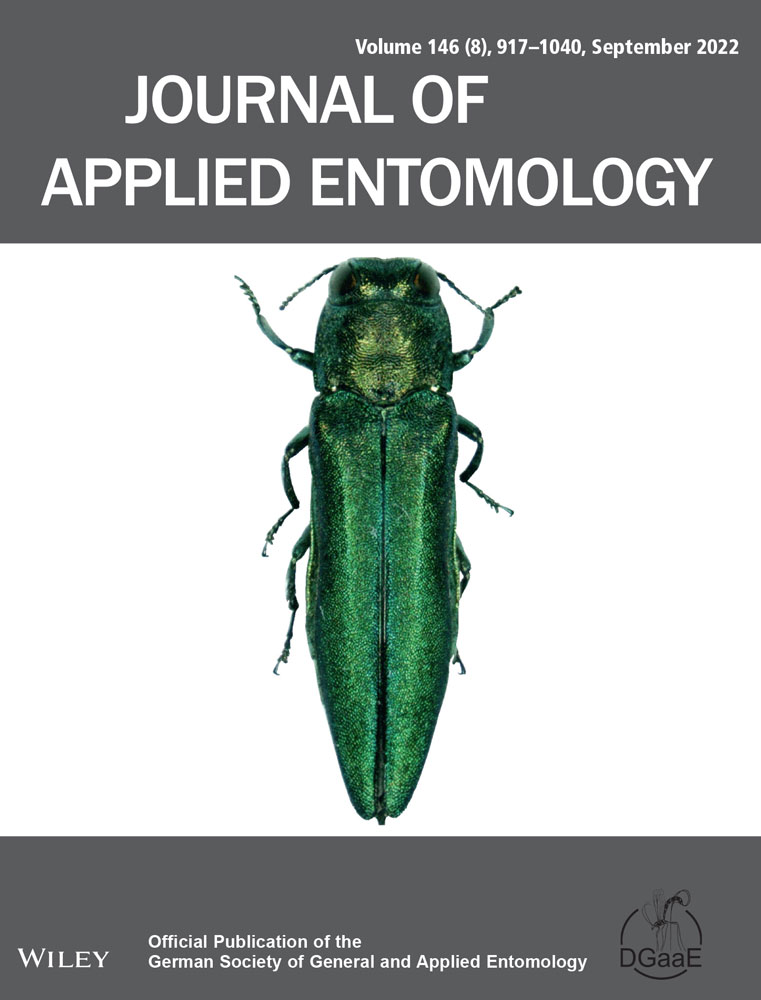Ver ítem
- xmlui.general.dspace_homeCentros Regionales y EEAsCentro Regional MisionesEEA MontecarloArtículos científicosxmlui.ArtifactBrowser.ItemViewer.trail
- Inicio
- Centros Regionales y EEAs
- Centro Regional Misiones
- EEA Montecarlo
- Artículos científicos
- Ver ítem
Impact of a leaf-cutting ant (Atta sexdens L.) on a Pinus taeda plantation: A 6 year-long study
Resumen
Leaf- cutting ants are the most economically important pest of plantation forests in the Neotropics. These social insects can defoliate whole trees, reducing their growth ability and occasionally causing tree mortality. Control of leaf- cutting ants in plantations is mainly carried out by using insecticides such as sulfluramid or fipronil. Foresters that adhere to voluntary sustainability certification systems are requested to implement integrated pest
[ver mas...]
Leaf- cutting ants are the most economically important pest of plantation forests in the Neotropics. These social insects can defoliate whole trees, reducing their growth ability and occasionally causing tree mortality. Control of leaf- cutting ants in plantations is mainly carried out by using insecticides such as sulfluramid or fipronil. Foresters that adhere to voluntary sustainability certification systems are requested to implement integrated pest management programmes that reduce the use of insecticides. However, this approach is much delayed since it requires a better understanding of ant ecology, including quantitative data on the long- term impact that leaf- cutting ants have on tree plantations. In this study, we show, for the first time, the results on the long- term impact of Atta sexdens L. on a Pinus taeda L. plantation in NE Argentina. The annual growth in diameter, height, volume and mortality of P. taeda trees in two 11 ha stands were evaluated up to the middle of the harvest cycle (i.e. 6 years). One of the stands had no control of A. sexdens nests, and in the other stand, all ant nests were removed (total control). After six years since planting, P. taeda trees show significant reductions in total height (19%), diameter at breast height (4.4%) and wood volume (21%) in sites with A. sexdens present. Moreover, tree mortality reached 31.2% when ants were present. Forest managers could use these results to improve their integrated management programmes, by better adjusting their economic damage threshold parameters.
[Cerrar]

Autor
Scherf, Abel Nicolás;
Corley, Juan Carlos;
Gioia, Carlos David;
Eskiviski, Edgar Rafael;
Carazzo, Cristhian;
Patzer, Hernán Raúl;
Dimarco, Romina Daniela;
Fuente
Journal of Applied Entomology (First published: 10 July 2022)
Fecha
2022-07-10
Editorial
Wiley
ISSN
1439-0418
Documentos Relacionados
Formato
pdf
Tipo de documento
artículo
Proyectos
(ver más)
INTA/2019-PE-E4-I074-001/2019-PE-E4-I074-001/AR./Manejo Integrado de Plagas
Palabras Claves
Derechos de acceso
Restringido
 Excepto donde se diga explicitamente, este item se publica bajo la siguiente descripción: Creative Commons Attribution-NonCommercial-ShareAlike 2.5 Unported (CC BY-NC-SA 2.5)
Excepto donde se diga explicitamente, este item se publica bajo la siguiente descripción: Creative Commons Attribution-NonCommercial-ShareAlike 2.5 Unported (CC BY-NC-SA 2.5)

